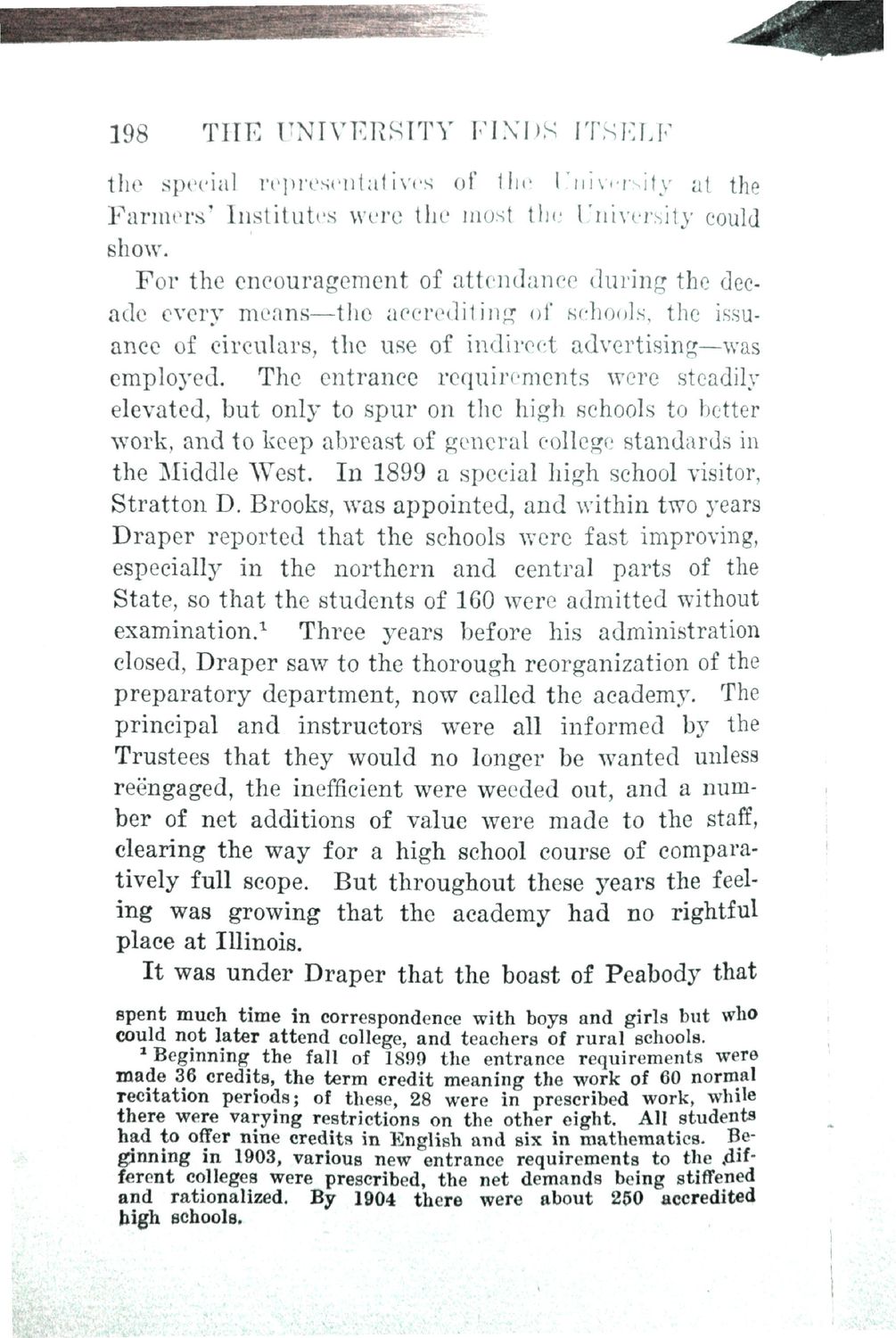| |
| |
Caption: Book - History of the University (Nevins)
This is a reduced-resolution page image for fast online browsing.

EXTRACTED TEXT FROM PAGE:
198 THE UNIVERSITY FINDS ITSELF the special representatives of the University at the Farmers' Institutes were the most the University could show. For the encouragement of attendance during the decade every means—the accrediting of schools, the issuance of circulars, the use of indirect advertising—was employed. The entrance requirements were steadily elevated, but only to spur on the high schools to better work, and to keep abreast of general college standards in the Middle West. In 1899 a special high school visitor, Stratton D. Brooks, was appointed, and within two years Draper reported that the schools were fast improving, especially in the northern and central parts of the State, so that the students of 160 were admitted without examination.1 Three years before his administration closed, Draper saw to the thorough reorganization of the preparatory department, now called the academy. The principal and instructors were all informed by the Trustees that they would no longer be wanted unless reengaged, the inefficient were weeded out, and a number of net additions of value were made to the staff, clearing the way for a high school course of comparatively full scope. But throughout these years the feeling was growing that the academy had no rightful place at Illinois. It was under Draper that the boast of Peabody that spent much time in correspondence with boys and girls but who could not later attend college, and teachers of rural schools. * Beginning the fall of 1899 the entrance requirements were made 36 credits, the term credit meaning the work of 60 normal recitation periods; of these, 28 were in prescribed work, while there were varying restrictions on the other eight. All students had to offer nine credits in English and six in mathematics. Beginning in 1903, various new entrance requirements to the 4if* ferent colleges were prescribed, the net demands being stiffened and rationalized. By 1004 there were about 200 accredited high schools.
| |